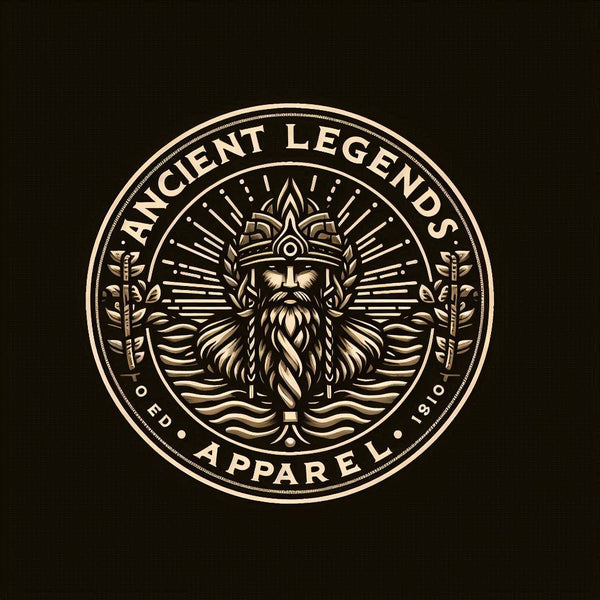Beasts and Monsters in Viking Lore
Karl FShare
INTRODUCTION
The fascinating world of Vikings is filled with rich narratives, seeping with primordial intensity that evoke the primal instincts in all who dare explore its depths. Much more than the axe-wielding, horned helmet-wearing seafarers popular culture portrays them to be, the Vikings were a people rooted in their own set of beliefs and mythologies, featuring gods, warriors, and a bestiary of beasts. These beasts and monsters of Viking lore provide profound insights into the worldview of this ancient civilization. They not only reveal the Vikings' religious beliefs but also their interpretations of mortality, morality, and the forces of nature.
ORIGIN AND CULTURAL CONTEXT
The Norse mythology, from which these creatures emerge, emerged approximately from 800 AD to 1100 AD during the Viking Age in Scandinavia. While their myths appeared significantly in Old Norse literature, little written records existed before the advent of Christian missions—to the Vikings, sagas were for oral sharing around the hearth. Thus, the context and origins of these beasts lie not only in legends and eddas but also in archaeology, art, and extrapolative linguistics that help us extrapolate narratives which the Vikings would have spun among themselves.
THE LEGEND OR STORY
In the pantheon of Viking beasts, the dire wolf Fenrir, the colossal sea serpent Jörmungandr, and the fire-breathing dragon Níðhöggr stand out as the most fearsome. Fenrir, a monstrous wolf sired by Loki, grew so large and fierce that the gods, fearing him, bound him with a magical chain. This enraged Fenrir, who then killed Odin, marking the advent of Ragnarök, the Norse apocalypse.
Jörmungandr, another of Loki’s offspring, was cast into the ocean by Odin, where he grew so large that he encircled the earth, biting his own tail. During Ragnarök, he would release his tail, rise from the deep, and wreak havoc alongside his brother, Fenrir.
Níðhöggr, on the other hand, represents the perils of greed and malice. The fire-breathing dragon gnawed on the roots of Yggdrasil—the world tree—symbolizing the destructive forces eating away at the base of the cosmos.
INTERPRETATIONS AND SYMBOLISM
Each monstrous creature in Viking lore served a specific symbolic purpose, embodying fears and dangers. Fenrir's tale reflects the Vikings' struggle against nature's monstrous forces that threaten to consume civilization. Jörmungandr, wrapping the earth, symbolizes the cyclical nature of life and death. In releasing his tail, Jörmungandr disturbs the order, indicating the terrifying rebirth—destruction leading to creation, typical of the Norse cosmological outlook.
Níðhöggr’s gnawing away at Yggdrasil's roots perhaps further accentuates the incredibly delicate balance of order and chaos that was fundamental in the Viking worldview. It might also harken to the constant threat that malice and greed represent to societal and cosmic stability.
COMPARISONS IN OTHER CULTURES
Across cultures and times, beasts have been used to represent similar attributes. The Leviathan of Biblical lore resembles the sea serpent Jörmungandr, illustrating monstrous power and the primeval chaos. Greek mythology presents Cerberus, akin to Fenrir, the monstrous canine bonding death and afterlife. Dragons, like the Níðhöggr, are key players in numerous global mythologies, from that of Sumerians, Chinese, to the Aztecs, usually representing some form of destructive power or insatiable greed.
MODERN REFERENCES AND POP CULTURE
In an era where pop culture is heavily drenched with fantasy, echoes of ancient monsters continue. Most prominently, in the acclaimed television series "Game of Thrones," dire wolves and dragons have pivotal roles. “Thor: Ragnarok” from Marvel Cinematic Universe also brought Jörmungandr, Fenrir, and Ragnarök to the big screen, albeit with varying degrees of mythological accuracy. Many novels, games, and motion pictures have drawn inspiration from Viking lore, reshaping them according to modern interpretations, thus keeping the Viking beasts alive in our collective imagination.
LEGACY AND LASTING MYSTERIES
Despite the lasting legacy of these Viking beasts in popular culture, their mythologies still shroud in mysteries. Regrettably, many books of Old Norse literature have been lost to time, leaving holes in our understanding of these creatures and their symbolism. The intricate connection between beast lore and Viking life, their metaphysical beliefs, and their very worldview remains a topic of much discussion among scholars.
Unraveling these Viking narratives is a journey not merely into the realm of mythology, but into the unruly wilds within ourselves. These Viking monsters, like the Vikings themselves, remind us of our primal instincts, our struggles with chaos and order, and ultimately, our own narrative within the cosmos we inhabit—an extraordinary testament to the narrative prowess and imaginative depth of the human species.
